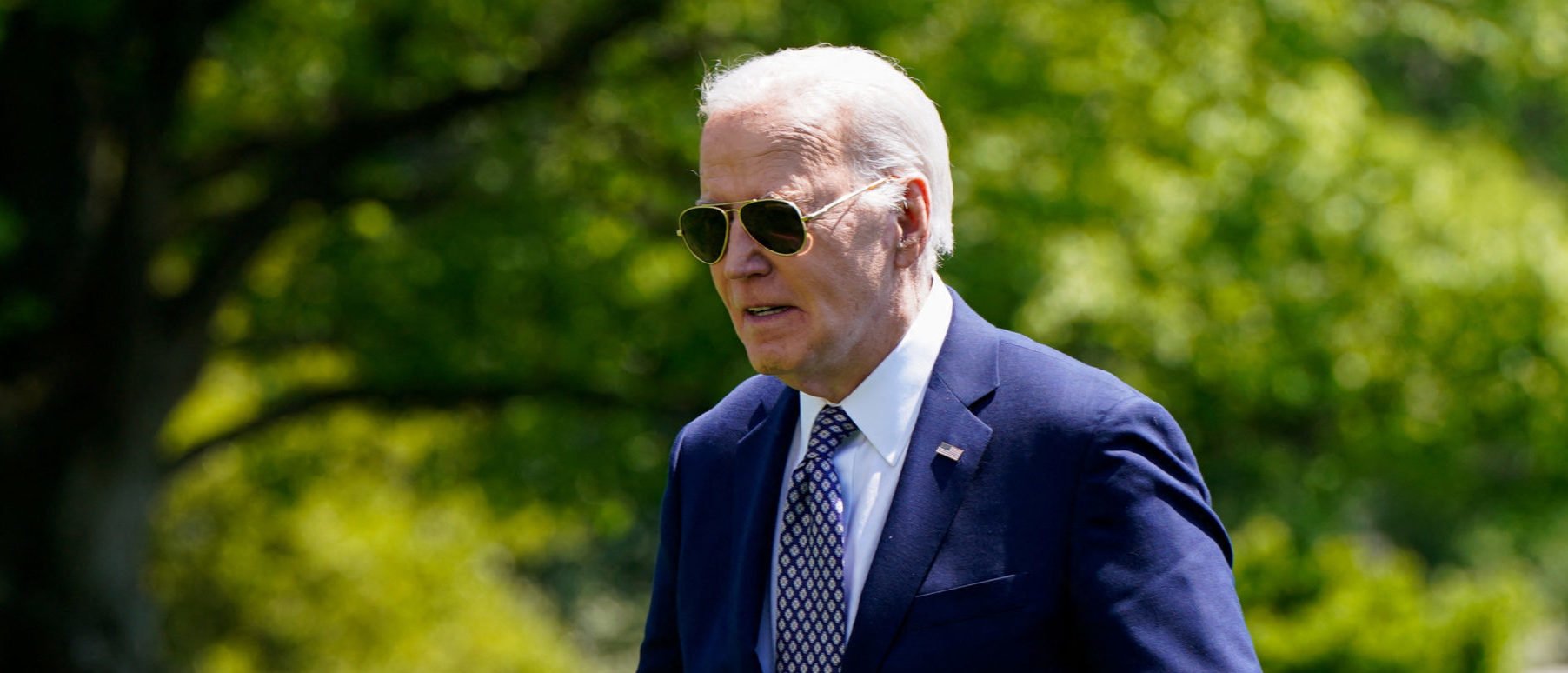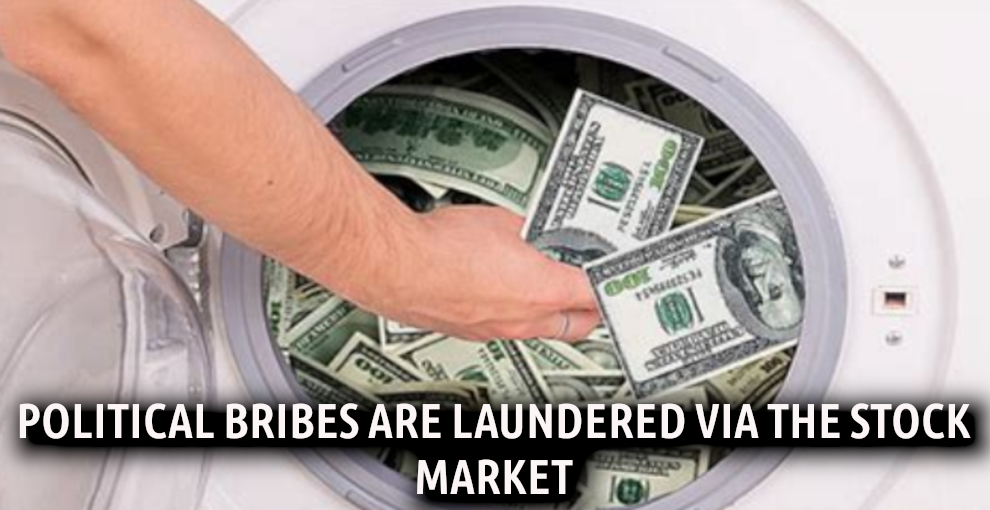Biden has given America’s money to off-shore special interests instead of America’s own Social Security program! Biden cut off USDA housing funds so he could payola foreign governments!
Inflation hits 20% under Biden, pushing small businesses to brink...
Retirees Drain Savings Faster to Cope…
Credit card delinquencies surge; 1 in 5 users maxed out…
Great ‘Vibecession’ Rages Through $11 Trillion Stock Boom…
WALL STREET HITS ALL-TIME HIGHS…
DEBT BOMB: America running out of money, and nobody cares…
Dimon urges Feds to deal with deficit sooner rather than later…
U.S. annual economic growth measured just 1.6% in the first quarter of 2024, following a report of persistently high inflation in March of 3.5% year-over-year. The combination of both low growth and high inflation, in conjunction with continuously high amounts of government spending and debt, has led to signs of stagflation in the U.S. economy, which wreaked havoc on U.S. consumers throughout the 1970’s, according to experts who spoke to the DCNF. (RELATED: Fed’s Preferred Inflation Gauge Surges Higher In Yet Another Worrying Sign For US Economy)
“It’s not so much that we risk stagflation as we’re already there,” E.J. Antoni, a research fellow at the Heritage Foundation’s Grover M. Hermann Center for the Federal Budget, told the DCNF. “We have basically pulled forward trillions of dollars of economic growth by borrowing from the future, but that must be repaid at some point. And it is highly inefficient as well.”

U.S. President Joe Biden walks back to the White House after disembarking from Marine One, Washington, U.S., April 26, 2024. (REUTERS/Elizabeth Frantz)
Stagflation is a unique economic phenomenon that involves slow growth, high unemployment, and elevated inflation and is particularly difficult to address as solutions for one issue can exacerbate the others, according to Investopedia. The most notable example of stagflation occurred in the 1970’s, after an oil crisis.
The U.S. national debt climbed above $34 trillion for the first time at the start of 2024 and currently sits at nearly $34.6 trillion, according to the Treasury Department. The national debt has increased by around $6.8 trillion since President Joe Biden first took office in January 2021.
“Stagflation is the inevitable result of Bidenomics,” Michael Faulkender, chief economist at the America First Policy Institute, told the DCNF. “When you massively increase spending, whether green subsidies or student loan forgiveness, while simultaneously reducing the ability of the economy to produce because of all the regulatory restrictions being imposed, you get reductions in growth with higher prices. If Bidenomics continues, then we should expect stagflation to continue.”

Shoppers browse in an Aldi store in London, Britain, February 15, 2018. (REUTERS/Peter Summers)
Biden has made high-spending policies part of his broader agenda, signing the $1.9 trillion American Rescue Plan in March 2021 and the $1.2 trillion Bipartisan Infrastructure Law in November 2021. The president also signed the Inflation Reduction Act in August 2022, which authorized $750 billion in new spending, with $370 billion of that dedicated to green initiatives to combat climate change.
The Biden administration’s latest plan to forgive student loans would cost an estimated $559 billion over the next ten years through various loan cancellations and interest suspensions. The president had one of his previous, more costly plans to forgive student loans struck down by the Supreme Court in June 2023.
Jai Kedia, a research fellow in the Center for Monetary and Financial Alternatives at the Cato Institute, cautioned the DCNF about assuming the U.S. was suffering from stagflation, noting that the phenomenon is usually accompanied by major supply shocks.
QT continues but there’s a long way to go before we return to normalcy, and that likely won’t happen w/ Powell & Co. chomping at the bit to cut rates and taper the balance sheet runoff – securities are only down 18.6% from their peak and total assets down just 17.4%: pic.twitter.com/PV48bGZozW
— E.J. Antoni, Ph.D. (@RealEJAntoni) April 25, 2024
“The news on both fronts — inflation and output — is far from ideal, but there is no reason to think that we will get stagflation from just this one report,” Kedia told the DCNF. “When stagflation last occurred in the 1970s and early 1980s, the U.S. economy had significantly different characteristics. That era was marked by severe wage inflation and strong wage contracting at unsustainably high levels, driven primarily by labor union bargaining. Businesses passed those labor costs on to consumers, and since those wage increases weren’t the result of any productivity gains, the result was inflation with little economic growth. That unique situation is (hopefully) unlikely to occur again.”
Despite recent low growth figures, gross domestic product surged in the third and fourth quarters of 2023 to 3.4% and 4.9%, respectively. Economic growth projections in those quarters included huge gains from government spending.

Ukraine sympathizers fly a Ukrainian flag outside as the Senate works through the weekend on a $95.3 billion foreign aid bill with assistance for Ukraine and Israel at the U.S. Capitol on February 11, 2024 in Washington, DC. The bill includes $60 billion to support Ukraine in its fight against Russia, $14.1 billion in security assistance for Israel, $9.2 billion in humanitarian assistance and $4.8 billion to support regional partners in the Indo-Pacific region, among other provisions, according to the Senate Appropriations Committee. (Photo by Roberto Schmidt/Getty Images)
“Today’s report shows the American economy remains strong, with continued steady and stable growth,” the White House said in a statement following Thursday’s GDP report. “The economy has grown more since I took office than at this point in any presidential term in the last 25 years — including 3% growth over the last year — while unemployment has stayed below 4% for more than two years. But we have more work to do. Costs are too high for working families, and I am fighting to lower them.”
Top-line job growth has remained high as well, with the U.S. most recently adding a total of 303,000 nonfarm payroll positions in March with an unemployment rate of 3.9% after adding 275,000 in February. Despite persistent growth, gains have been dominated by part-time jobs and employment from the government.
“In general, high inflation and low output occur as a result of severe supply shocks,” Kedia told the DCNF. “The Fed does not have much control over such shocks, and it’s usually best to avoid making drastic monetary policy decisions on the basis of such shocks. It’s too early to tell if such a shock has occurred over the past month, so it is unclear whether output has gone down due to supply constraints, or whether the increased borrowing costs have finally cut down on people’s consumption, or whether this was a noisy data observation.”
In an effort to reduce the rate of inflation, the Federal Reserve has already raised its federal funds rate to a range of 5.25% and 5.50%, the highest in 23 years, with the last hike being in July 2023. At the Federal Open Market Committee’s (FOMC) most recent meeting in March, the majority of Fed governors kept their estimate from December that there would be three rate cuts by the end of 2024.

A customer shops at a grocery store on December 12, 2023 in San Anselmo, California. According to a report by the Bureau of Labor Statistics, inflation slowed in November as consumer prices rose 3.1% compared to year earlier. Prices of grocery staples like milk and eggs continue to decline. (Photo by Justin Sullivan/Getty Images)
“There is absolutely no reason for the Fed to cut rates this year besides the obvious political motivation,” Antoni told the DCNF. “Recall that during the first three years of the Trump presidency, the Fed was raising rates and selling off the balance sheet, also called ‘quantitative tightening.’ The reasoning for tighter monetary policy was fast labor market growth and inflation fears. Today, those indicators look even worse according to the Fed’s own thinking: job growth has been much faster according to official government metrics, and inflation remains far in excess of the 2.0% target, with inflation expectations completely unanchored. They should be talking about raising rates, not cutting them.”
A majority of investors now predict that there won’t be a rate cut until the FOMC’s September meeting as inflation remains persistent, according to CME Group’s FedWatch Tool.
Business leaders are cautious about the current state of the economy, with JPMorgan Chase CEO Jamie Dimon saying on Friday that he is hopeful that the U.S. can bring down inflation and maintain growth, but he is worried about the possibility of stagflation, according to The Associated Press.
“Sadly, the indicators point to stagflation for quite some time because the excessive government spending that caused this problem isn’t letting up,” Antoni told the DCNF.
The White House deferred the DCNF to previous statements.
(Bloomberg) — Almost two-thirds of Americans considered middle class said they are facing economic hardship and don’t anticipate a change for the rest of their lives, according to a poll commissioned by the National True Cost of Living Coalition.
By many traditional measures, the US economy is strong, with robust labor, housing and stock markets, as well as solid gross domestic product growth. But the data don’t capture the financial insecurity of millions of households who worry about their future and are unable to save, according to the group, created this year to come up with cost-of-living tools that help gauge economic well-being.
In the large poll of 2,500 adults, 65% of people who earn more than 200% of the federal poverty level — that’s at least $60,000 for a family of four, often considered middle class — said they are struggling financially.
A sizable share of higher-income Americans also feel financially insecure. The survey shows that a quarter of people making over five times the federal poverty level — an annual income of more than $150,000 for a family of four — worry about paying their bills.
Overall, regardless of the income level, almost 6 in 10 respondents feel that they are currently financially struggling.
Read More: US Middle Class’s Economic Anxiety Will Decide the 2024 Election
“The economy is booming, and yet many Americans are still gasping for air financially,” said Jennifer Jones Austin, chief executive officer of the Federation of Protestant Welfare Agencies, an anti-poverty advocacy organization that is part of the team that commissioned the poll, and co-chair of the National True Cost of Living Coalition. “They simply don’t have the breathing room to plan beyond their present needs.”
About 40% of respondents were unable to plan beyond their next paycheck, and 46% didn’t have $500 saved. The February poll found that more than half said it’s at least somewhat difficult to manage current levels of debt.
The quick rise in interest rates, coupled with high levels of outstanding debt, helps explain the disconnect between economic indicators and how many Americans feel financially.
The poll, conducted by Seven Letter Insight, also highlights the divide between debt-free households who are sheltered from the impact of rising rates and families who are overwhelmed with ballooning loan and credit-card payments. One third of the respondents said they have no debt at all.
The responses on savings also show wide disparities. About one in five respondents have at least $10,000 saved, but 28% have no savings at all. Overall, one in six said they have to make tough decisions on which bill to pay first on a regular basis.
David Jones, co-chair of the National True Cost of Living Coalition, said the polling results crossed party lines.
“It was Republicans, Independents, Democrats expressing the same kinds of issues,” he said. “It’s not going away no matter who becomes president.”
Some of the findings tracked with the Federal Reserve’s annual survey of household economics and decisionmaking, published last month. In that poll, close to half of respondents could cover a $2,000 expense, but 18% of adults said the largest emergency cost they could handle right now using only savings was under $100, and 14% said they could afford an expense of $100 to $499.








Media outlets continue to misrepresent government crime stats to Biden’s benefit
Numerous media outlets have, in recent months, run headlines suggesting that crime is declining across the country. The statistics they’re citing, however, don’t tell the entire story.
Two of the federal government’s methods of measuring crime tell two different stories, complicating recent claims from the media and President Joe Biden that crime is declining.
Numerous media outlets have, in recent months, run headlines suggesting that crime is declining across the country. The statistics they’re citing, however, don’t tell the entire story.
The federal government has two ways of measuring crime, the Bureau of Justice Statistics’ National Crime Victimization Survey (NCVS) and the Federal Bureau of Investigation’s (FBI) Uniform Crime Reporting (UCR) program. The former asks around 240,000 Americans if they’ve been the victim of a crime in the last year whereas the latter relies on crimes reported to police in a given year and shared with the bureau.
A gap has emerged between the two measures. More people are telling the Bureau of Justice Statistics that they’ve been victimized, but the FBI is reporting fewer crimes.
The UCR reported that violent crime fell by 2% between 2021 and 2022, according to the Council on Criminal Justice. By contrast, the NCVS found that the number of people saying they were the victims of violent crimes increased by 42.4% between 2021 and 2022, rising from 16.5 victimizations per 1000 people to 23.5 victimizations per 1000.
Despite these disparities, several media outlets published stories claiming that crime was declining in the United States. Mainstream outlets like NPR, Reuters, CBS News, The Hill, NBC News and PBS all presented FBI data to report that crime is decreasing, without mentioning the conflicting data produced by the NCVS.
NBC went as far as to say that “the drop in crime does not appear to be well understood by large majorities of Americans.” A December Gallup Poll found that 77% of Americans believe crime is getting worse.
Biden has capitalized on reports that crime is decreasing, claiming that his policies contributed to making communities safer by investing in public safety. “This week, the FBI released data showing that crime declined across nearly every category in 2023,” Biden said. “Thanks to the American Rescue Plan, which every Republican in Congress voted against, we made the largest-ever federal investment in fighting and preventing crime at any time in our history,” the president continued.
Some mainstream publications, however, did note that the FBI data should be approached with a degree of skepticism. The Guardian, for instance, noted in its reporting on the FBI data that “not all crime reports are collected” by the UCR and that “the FBI’s findings should be viewed with caution given the incomplete information.”
Among the reasons that the disparities might be so wide between the UCR and NCVS is that crimes that occurred, but were not reported, would not appear in the FBI’s UCR so, if the reporting rate falls, the gap between actual crime and what the FBI reports will grow.
Additionally, 31% of police departments didn’t report data to the FBI in 2022, according to The Marshall Project. The FBI’s transition to a new reporting system, that required more work from local law enforcement agencies, contributed to the relatively low response rates, according to the Washington Examiner.
In 2019, prior to the new reporting system, 89% of departments representing 97% of the population sent data to the FBI, the Examiner reported. In 2021, when the system was mandated, about 63% of agencies, covering 65% of the population, reported data.
Even among the jurisdictions that are reporting data, the FBI is undercounting crimes, according to the Examiner. Nashville’s 2023 municipal data, for instance, reports almost 1,000 more aggravated assaults than appear in the FBI’s dataset, the Examiner reported. Similarly, Baltimore reported 262 murders in 2023, but the FBI only logged 225 in the city.
NPR, Reuters, The Hill, NBC News and PBS did not immediately respond to the Daily Caller News Foundation’s requests for comment. CBS News could not be reached for comment.











